To price a course for maximum profit, you should do market research about what your competitors are charging, take a look at your production costs, learn pricing models, and test methods.
Key takeaways
- Calculate all costs including hidden expenses like taxes, equipment, and your time before setting course prices.
- Match your pricing model to your content type—subscriptions for frequently updated courses, one-time payments for evergreen material.
- Use bundles, limited-time offers, and target persona analysis to maximize sales while maintaining profitable price points.
The price of your online course should be based on your production costs, how much your competitor's are charging, the market demand, and what sets your course apart.
Getting paid is straightforward (or at the very least, enjoyable), but deciding how much to ask for is definitely not. You've spent many hours creating useful material, and there are overhead costs to think about, not to mention the worth of your labor.
Selling online courses is easy with Whop. All you need is to learn how to price them to set yourself up for success.
We'll walk you through every aspect of pricing an online course - from figuring out how much it costs to create, to adding pricing strategies that will get you more sales.
How to correctly price your online course in 4 steps
Setting your prices is important, and I bet that you're eager to hear some actual strategies. Let's get right to it and get your course the price that fits just right.
Examine how much it costs to create your course
It's shockingly easy to underestimate how much your course costs you to create. After all, if you're doing this in your spare time, on a PC or phone that you already own, you might think that there are no associated costs whatsoever.
Unfortunately, that's just not true. Selling online courses is a great way to make money from home, but it does come with some initial costs. Here are some things to take into account when setting your prices.
Break down development costs
Creating a course is not the same thing as writing an ebook. You can do the latter in Google Docs and Canva for free. (Spoiler alert: it's not actually free, as you'll learn in a moment.) But a course, depending on the type, may cost you quite a bit before you even release it to the world.
Consider the following:
- Video production. This includes your filming setup (if you need one) but also the costs of editing software or hiring a professional editor.
- Platform fees. Some course platforms will make you pay in advance before you even score your first sale. You can avoid that problem by selling your course on Whop.
- Design and branding. Just making your course content is only one part of the process; you'll also need to make all sorts of branding materials, from a logo to thumbnails, not to mention things like specialized worksheets.
- The cost of your own time. Researching, writing scripts, and producing course materials—all of those things take time. Even if you're doing this as a hobby, you should be paying yourself a salary, so make sure to factor in the equivalent of how much you'd earn if you were working during those hours.
All of the above covers the cost of things you'll need to do or invest in before your course is even up for sale.
Ongoing time investment
Some courses are pretty evergreen. Say, things like playing the guitar or fitness techniques—those courses don't need to be updated all the time in order to stay relevant. (Psst: check out how to sell fitness programs online!)
Things are drastically different if you pick a field like crypto, sports betting, or programming. Courses in volatile fields that are constantly growing need to grow alongside their industries. Some of those niches require monthly updates to stay relevant.
Tackling ongoing time investments can be done in two ways. You can either charge a subscription for access to your course, in which case you'll receive recurring payments for your work, or you can account for this by setting a higher initial price. Most people who update their courses frequently offer a mix of two pricing strategies: subscriptions and tiered.
Include hidden costs
Those costs I talked about a few paragraphs ago? That's not even all of it. Making courses, and digital products in general, comes with hidden costs that most of us don't think about. This includes:
- Licensing and permissions
- Paying taxes as a solopreneur
- Payment processing fees
- The cost of your equipment, such as a PC or a phone
- The cost of your bills, including electricity and internet
I'm not saying that every single course needs to cover your entire power bill, but don't overlook these costs when pricing your work—it all adds up.
Explore your target persona
The term "target persona" sounds a bit mysterious, but it's actually a valid strategy that can help you make courses that people want to buy.
A target persona is essentially a made-up customer that you can create based on what you know about your current (and prospective) buyers. With careful customer behavior analysis, you can make more informed decisions and not spread yourself thin trying to cater to every audience.
The sooner you think about your target persona, the better.
Your course is not for everyone
And that's okay.
When people look for online courses, they want something that works well with what they need. They set off on a journey with a clear end goal. More often than not, those people will have something in common; figuring out where they overlap will help you tailor your course to certain groups and score more sales.
Figuring out your target persona can, therefore, boost your revenue. Once you figure out the exact niche that most of your customers are in, you'll have an easier time catering to them. As a result, you can also enjoy more organic marketing instead of having to spend a fortune on ads.
Over time, you'll become a big fish in a small, tailor-made pond, and that's a wonderful place to be as a content creator.
How using a target persona can help
We have a separate guide to figuring out the whole target persona thing, so check that out first. Once you're back here, here's how you can use your newly gained knowledge to achieve success as a course creator.
- Understand your ideal student. Think of demographics, pain points and goals, learning preferences, and budget constraints.
- Segment your audience. This is a great way to make the most of tiered pricing. You can offer beginner courses at affordable prices and advanced courses for more.
- Professionals vs. hobbyists. If your course is targeting people who will then turn their new knowledge into more money, you can often charge a whole lot more. In this case, make sure to emphasize the end goal and the ideal outcome!
- Budget constraints. Knowing your audience will help you price your course. For instance, if your course is aimed at young students just starting their professional lives, you can't charge too much—the majority of your target audience has limited disposable income. In those cases, things like monthly subscriptions or freemium models tend to do well.
Consider your pricing strategy
Pricing might be the single most impactful decision you'll make as a course creator. Winging it is not an option here. You might get lucky, but if you don't, your course may not get the attention that it deserves.
Go in with a detailed plan for your pricing strategy. Don't forget to consider the following:
Pricing model
All that research you've done about your target persona will come in so handy here. Before you ever decide on individual pricing, think about the pricing model you want to use:
- Subscription
- Flat fee
- Tiered pricing
- Bundles
- Pay-as-you-go (paying per module)
- Premium pricing
Remember that you don't need to settle on just one of these. With Whop, you can use all of the above pricing strategies and offer customized variants for more than one type of customer.. Set up your own whop today
Price vs. value
It's hard to objectively decide the value of something you created yourself, but it's important to try. But remember that the value of your course is not directly tied to its length.
The length plays a part—of course, a 60-hour course should cost significantly more than a 5-hour course. However, there's more to it than that.
Ask yourself:
- What can your course bring to your students?
- What does your course offer that your competition doesn't?
- Are you offering any extra material?
- Is your course covering a trendy topic?
- Are you an expert in this niche?
- Do you want your course to be labeled as "budget" or "premium"?
The above, plus the depth and the value of your course, and the associated costs all play into the price vs. value ratio.
Create attractive offers
It might feel tempting to set up some prices and call it a day, but that doesn't really work in the e-learning world. It's all about interesting offers and discounts that make the learning process more affordable.
Don't get me wrong—you still want to maintain prices that cover everything we talked about previously. But adding some extra special offers lets you keep your prices high, all the while creating a sense that the customer is getting a fantastic deal (because they are!).
So what can you do? Here are some ideas.
Bundle your courses
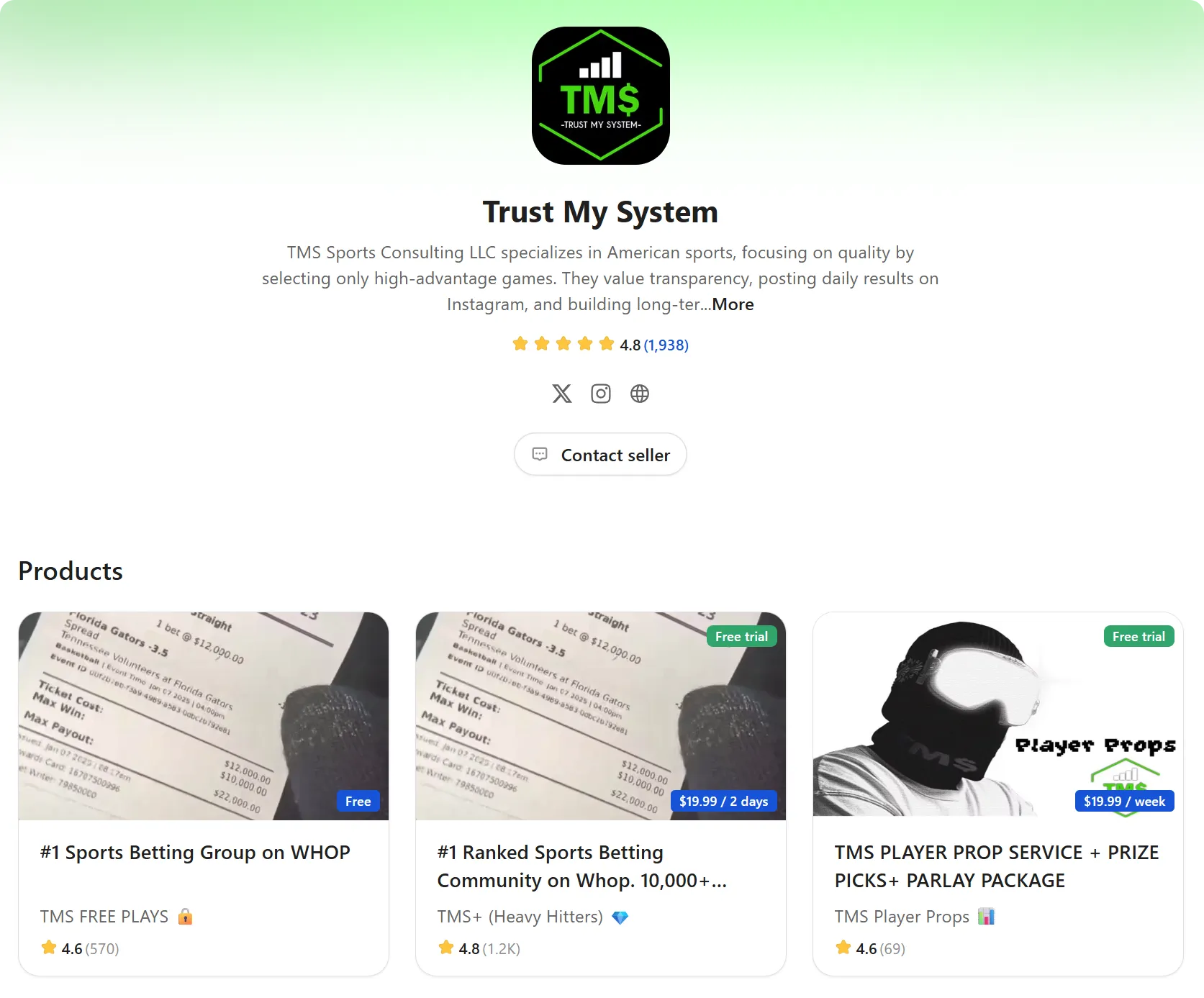
Creating bundles is one of the best ways to boost the sales of your digital products in a major way. This is especially great if you're an all-around content creator and aren't focused strictly on courses. On the other hand, if you're selling multiple courses under the same brand, you can easily bundle them to earn more money and bring more value to your customers.
Here are some helpful tips and tricks:
- Offer multiple related courses together, such as bundling a HTML and CSS course with JavaScript
- Create learning paths to sell beginner and intermediate courses together
- Offer discounts on bundled courses; for example, if each costs $200, sell the bundle for $350
- Throw in more than just courses, such as ebooks, additional lessons, templates, or exclusive tips
Make your course impossible to resist
The goal is to convince your customers to go ahead and buy your course right now. What better way to achieve this than with some exciting offers?
- Offer frequent discounts, no matter if you're selling subscriptions, bundles, or just a single course
- Run regular live Q&A sessions with yourself or industry experts, webinars, or coaching calls
- Offer certificates of completion that your students can then show to prospective employers
Most of all, instill a sense of urgency in your students. (It sounds mean, but it works.) The best way to do this is by running limited-time offers. Many course creators offer exciting discounts for short periods of time to get people to shop now.
Online course pricing strategies
1. One-time payment

If you want something straightforward, you can take one-time payments for your course. This transparent method gives you immediate revenue with the full amount paid upfront.
In return, your customers usually get lifetime access to all course materials, which is a strong selling point for longer courses that might take a while to complete.
One-time payments are nice, but keep one thing in mind—every extra work you put into your course will essentially be for free from the moment of the sale onward. This is why they work best with evergreen content that you can make once and keep selling it without much upkeep.
This pricing strategy is also the easiest when it comes to running promotions and sales. Limited price drops can get people to buy your course without any additional monthly commitments.
Pros:
- Highly scalable
- Offers passive income
- No ongoing commitments
Cons:
- Not ideal for courses that you need to update
- Expensive courses may not get as many buyers
2. Freemium model
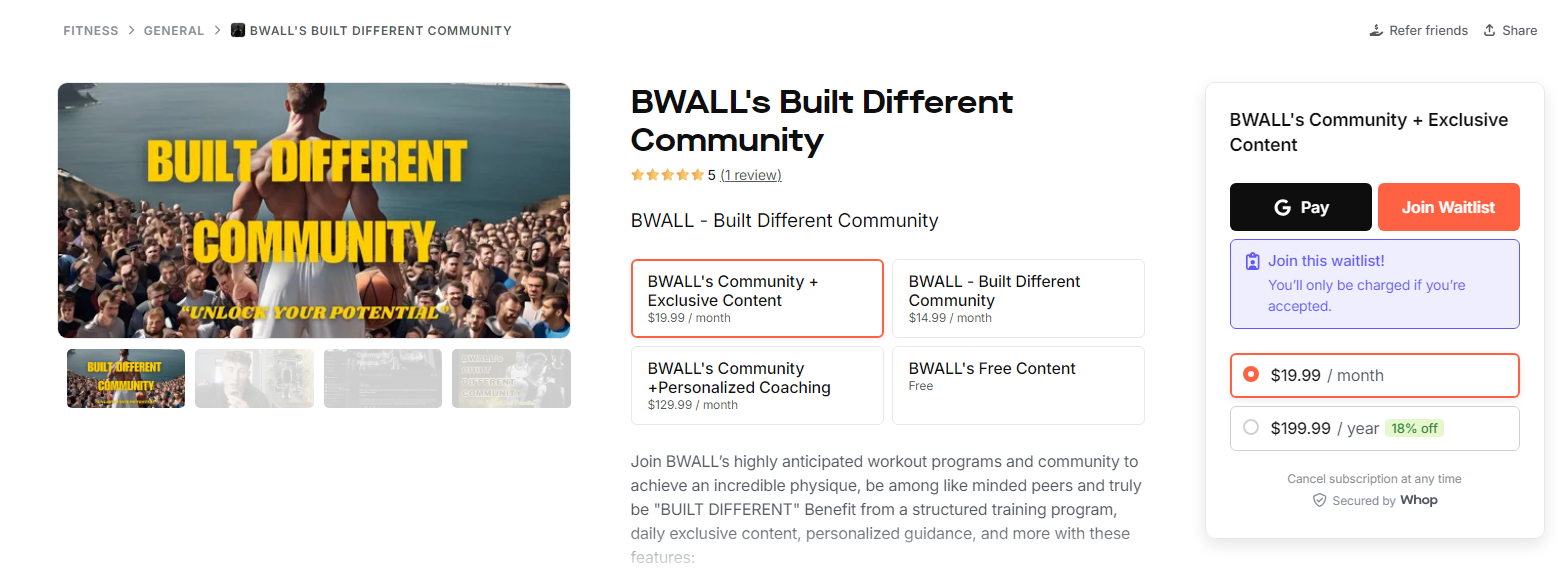
The freemium model is an excellent way to get sales in this industry. Seeing as courses can sometimes be pretty expensive (as they should be!), offering some of your content for free can really help reel people in.
In the freemium model, you'll be offering some basic content for free, but you will still charge for premium features. In the above example, BWALL's Built Different has a free tier that works as a teaser, and then several monthly tiers that unlock the rest of the content, including courses and community access.
Although it might seem counterintuitive, using the freemium model is a great conversion strategy. It attracts a large audience, and hey, the more people see it, the more will buy it. It works well as a combination with pretty much every other pricing model, from flat fees to subscriptions.
Pros:
- You can convert free users to paying customers
- Can be used with subscriptions, one-time fees, or bundles
- Lower barrier to entry
Cons:
- Many users will only try out your free content and won't spend a dime
- Low initial revenue
3. Subscription
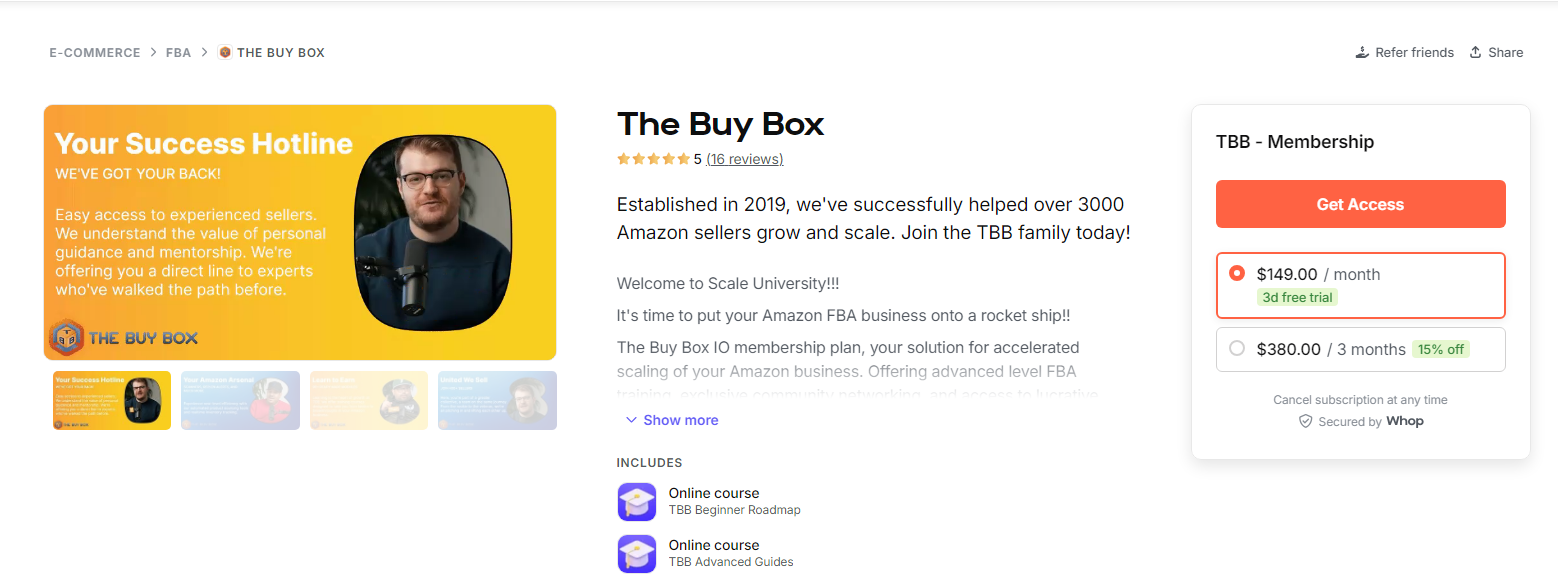
Just like you're probably subscribed to Netflix (and if you're like me, a million other streaming services that you hardly ever use), your customers can subscribe to your course. This will give them access to all of the content you want to offer for the duration of the sub.
Most common subscription plans in online courses include weekly and monthly, but some—like The Buy Box—also offer 3-month or 6-month subscriptions. It all depends on how long your course takes to complete on average, and whether you're going to update it with new content.
Subscriptions are a great way to get yourself a steady income stream. For the customers, they're a good option if they don't want to spend a lot of money upfront, but also if you have a library of more than one course that subscribing can unlock.
Pros:
- Recurring revenue
- Wide range of content for the customers
- Regular updates boost customer retention
Cons:
- Small initial revenue
- You will need to update your courses to keep people subscribed
4. Tiered pricing
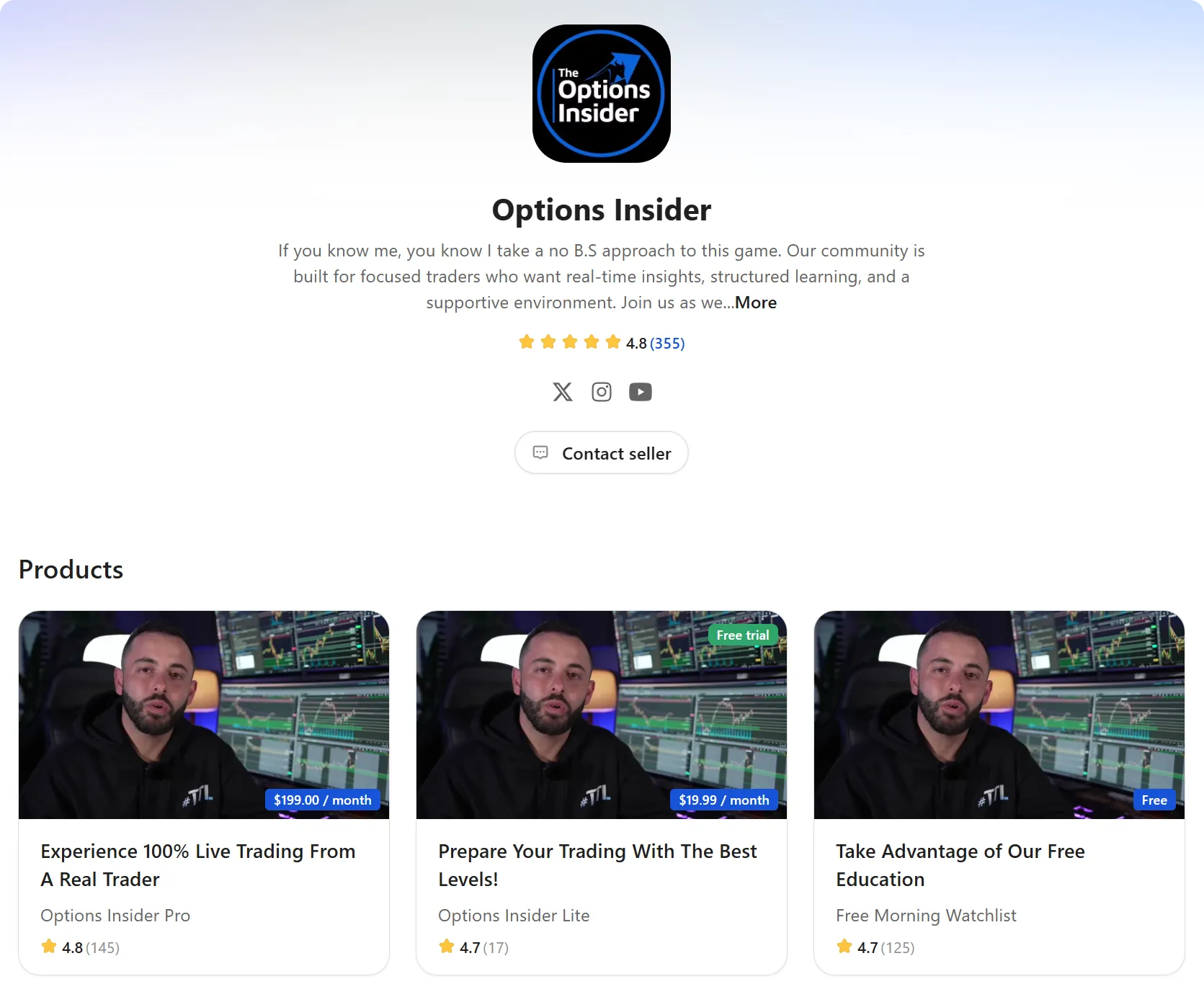
Tiered pricing is a system that works well with pretty much every other pricing strategy under the sun. It essentially means that, instead of setting one flat fee for your course, you'll set a few pricing tiers. The cheapest tier offers the least content, and the most expensive one, as you may have guessed, offers the entirety of your course. Many creators add more content to sweeten the pot, such as by including worksheets, ebooks, or even one-on-one coaching calls.
There are a lot of benefits to going with tiered pricing. Most of all, it makes your content accessible to everyone, no matter how deep their pockets are. Just look at the way Options Insider is doing it, with the cheapest tier starting at $19.99 per month, while the pricier premium tier costs $199.99/month. If you want lifetime access, that's a tier of its own, priced at $1,997.
The downside? Most of all, you'll need to consider creating some non-course content to make your most expensive tier all the more enticing. And don't forget that less is more, and setting up too many pricing tiers just creates confusion and makes your buyers click away.
Pros:
- More pricing options means you can appeal to a broader audience
- Increased revenue potential
- Scalability for both you and your students
Cons:
- Each tier needs to have a clear value proposition
- Too many tiers can work against you
5. Premium pricing

If your course has something that no one else can offer, and you're in one of the most lucrative online course niches, you can drive up the price sky-high. This is what puts you in the premium pricing tier.
After all, charging very high numbers takes a lot of guts. But if you can provide enough value, people will be willing to pay higher prices, be it $500 or $2,000—or even $15,000.
Fewer people may be able to afford your course, but those who can will be looking for something that ticks all the boxes. You'll get much higher revenue per sale, but your sales will likely be far apart, so consistent income isn't always a given.
Pros:
- Huge revenue per sale
- Focus on quality over quantity
- Effective for specialized topics
Cons:
- Without marketing and building your own brand, getting sales is tricky
- You need to stay on top of updates and add value
6. Bundles
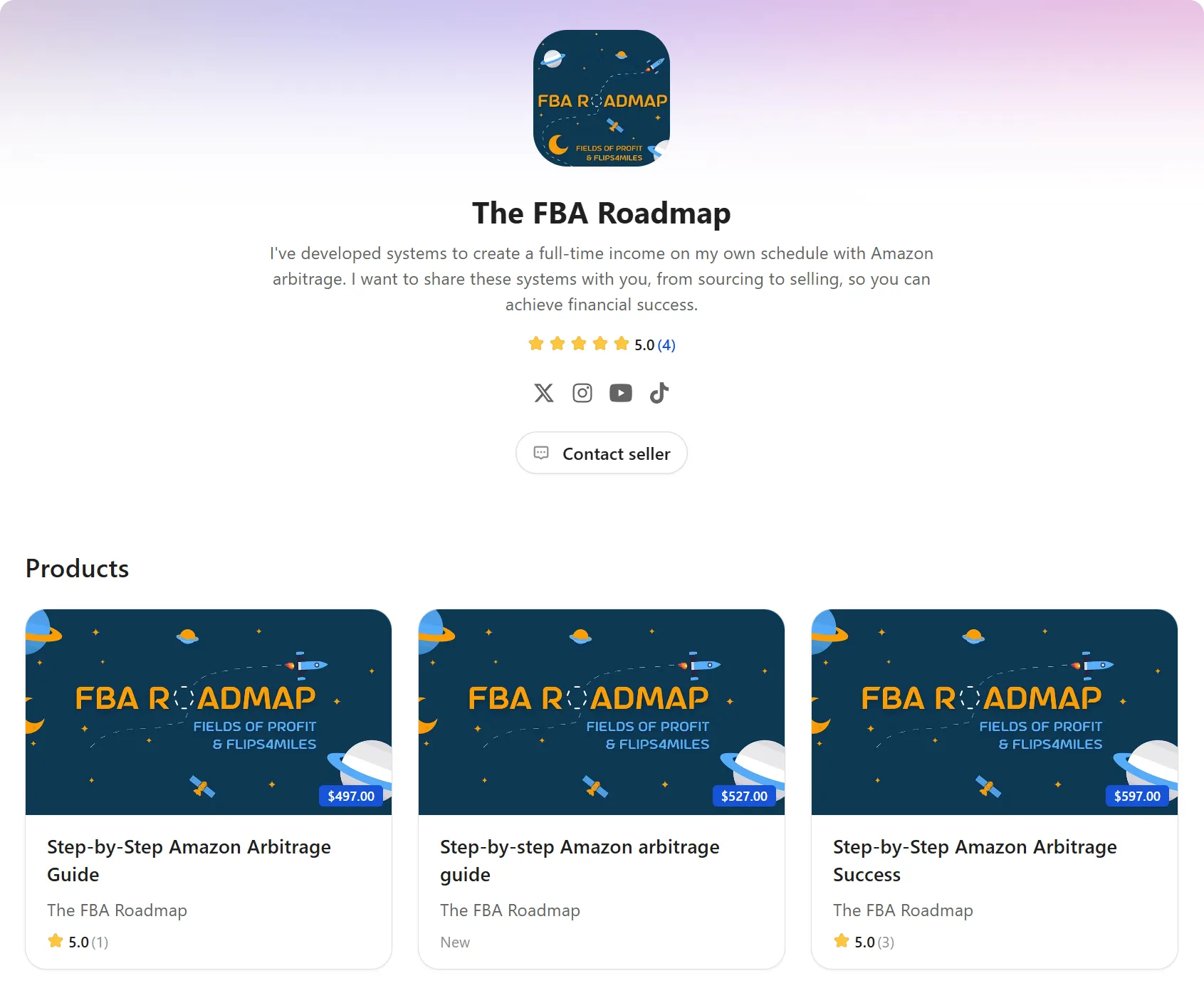
If you're into making more than just courses, selling bundles with tiered pricing is an excellent way to make some extra cash. Many students appreciate access to extra content, and compared to the time it takes to make a course, some of those extra goodies won't take you nearly as much time to make.
Just take a look at The FBA Roadmap here and see how it employs a mix of course bundling and tiered pricing. The lowest tier is the course alone, but the two pricier tiers add more value with extra content.
You can bundle your courses with worksheets, studying materials and guides, trackers, ebooks, or access to private communities. Of course, students always appreciate direct contact with you, so things like live events and personal coaching are always a hit.
Pros:
- Smart pricing always encourages users to spend more
- Cross-selling and upselling opportunities
- Targeted learning paths
Cons:
- Too many bundles can be confusing for the buyer
- A lot more work than just making a course
The difficulty with pricing an online course
Whether you already have some courses under your belt or you're in the planning stages, you're already an entrepreneur—and as an entrepreneur, you deserve to get paid fairly for your work.
Deciding what "fairly" means is difficult, though. Pricing any digital product is a challenge, but courses are arguably even harder to decide on. Many creators find that while seeing their courses score their first sales feels great, setting the prices is the most difficult part of becoming a content creator.
Creating a course takes many hours, requires a certain degree of knowledge, and may come with extra costs. The way you price your course needs to reflect just how many variables had to come together for you to be able to make it. All that knowledge you possess? That didn't come from out of nowhere over the course of a day. All that time you spent actually creating your course? You could've spent it doing something else, so that costs money too.
On the other end of the spectrum are your customers and how much they are willing to pay for your course.
You might feel tempted to price your creations as low as possible just to get more sales, but believe it or not, that strategy can backfire. Not to mention that you deserve to get a competitive rate for all your work.
Creators like you often struggle with finding the right balance between "worth my time" and "worth it for the buyer." We're here to help. Read on to learn how to price your online courses!
What's the average price of an online course?
The average course cost $177 with professional courses going up to over $2,000.
However, this does not mean that you must price your course between these numbers.
As mentioned, the price of your course depends on your experience, product, and what you have to offer - for example, The Peachy Investor offers its course and mentorship package for $167 a month, while the Brand Discovery course is $1995.
When setting your prices, your first steps will involve doing a lot of research into how much your competitors are asking for. Then, based on your research, you can decide how much you can charge for your own course.
The prices of courses vary wildly based on factors such as:
- course length
- extra content
- topic
- how saturated the market is
- the platform you're selling through
- community-based learning
- coaching
- live events
- one-on-one calls
- content updates
- pricing strategy
As such, it's hard to name a single average that fits every niche. But, beyond your own research, we'll give you some useful tips based on your pricing strategy and `business model`, as that's the one factor that has the biggest impact on how much you're going to charge.
Selling your course for a steal? Why charging too little for your online course is a bad idea
Do you want to know the #1 trap that many new content creators fall victim to?
It's easy: undervaluing themselves. Impostor syndrome is real, and it's probably whispering in your ear right now, telling you to cut the price back. I'm here to help you shoo it away.
Remember: you deserve to get paid fairly. That's a fact, but I know that believing it is hard sometimes. I know that as a new course creator, you might think that you need to build a name for yourself first.
What if I told you that pricing your course low is actually working against getting more sales? It all comes down to perceived value.
Think of it like this. If you're shopping for new shoes, and you know you want them to be a good pair that will last you for a few years, you're going to steer clear of those pairs that cost $15 and look like they'll fall apart any second. Instead, you'll invest in shoes that cost $70 or $100 and won't need to be replaced for a long time. This doesn't necessarily mean that those more expensive shoes will be far better, but the price alone tells you that they should be, and that's enough.
This logic applies to online courses in a big way. People are coming to you to learn something that they need, be it for a hobby or for work. If you're undervaluing yourself, many will jump to the wrongful conclusion that your course doesn't offer anything that special.
When you browse various e-learning platforms, you'll find many courses priced at $5 or less. Although they might promise to give you the sky and the moon and the stars, it's hard not to assume that they don't have much to offer.
Pricing your course too low really works against you. It does the following:
- Lowers the perceived quality of your course
- Undermines your expertise as a course creator
- Reduces commitment from learners, meaning lower customer retention
- Makes raising prices much more difficult
- Basically removes your entire marketing budget, because how are you going to pay for ads if your course costs $10?
- Drastically limits your revenue potential
- Hinders your growth
This is why it's important to set your prices according to what you truly deserve. Your competitors will serve as examples of what to expect in your niche, but even if you find some of those $5 to $20 courses, remember that they're not your competition. As long as you provide value, you're in an entirely different segment of your industry.
Increasing the cost of your online course
Let's say that you've got a course (or five) and it's already collecting sales. Things are going well, and as you're getting solid reviews all around, you're feeling ready to increase your prices.
If the idea of ramping up the prices is giving you a feeling of dread, it's totally understandable. However, it's possible to raise your prices, make more money, and keep your customers happy. It all comes down to—once again—your strategy.
Target the right kind of buyers
When you're selling your first course, making a target persona is highly recommended, but not necessary. For increasing your prices, it's an absolute must.
You now have access to a lot of analytics data about the people who already buy your courses, which means you can niche down more. This, in turn, lets you charge more for keeping things highly relevant.
Try to identify high-value segments of the market. It's often better to sell several niche-specific courses than one massive course with more generic information. For example, instead of a general course on crypto or on a massive currency like Bitcoin, you can create a course on leveraging altcoins in emerging markets or on DeFi strategies for Solana traders. The more specific you get, the better.
Offer specific results
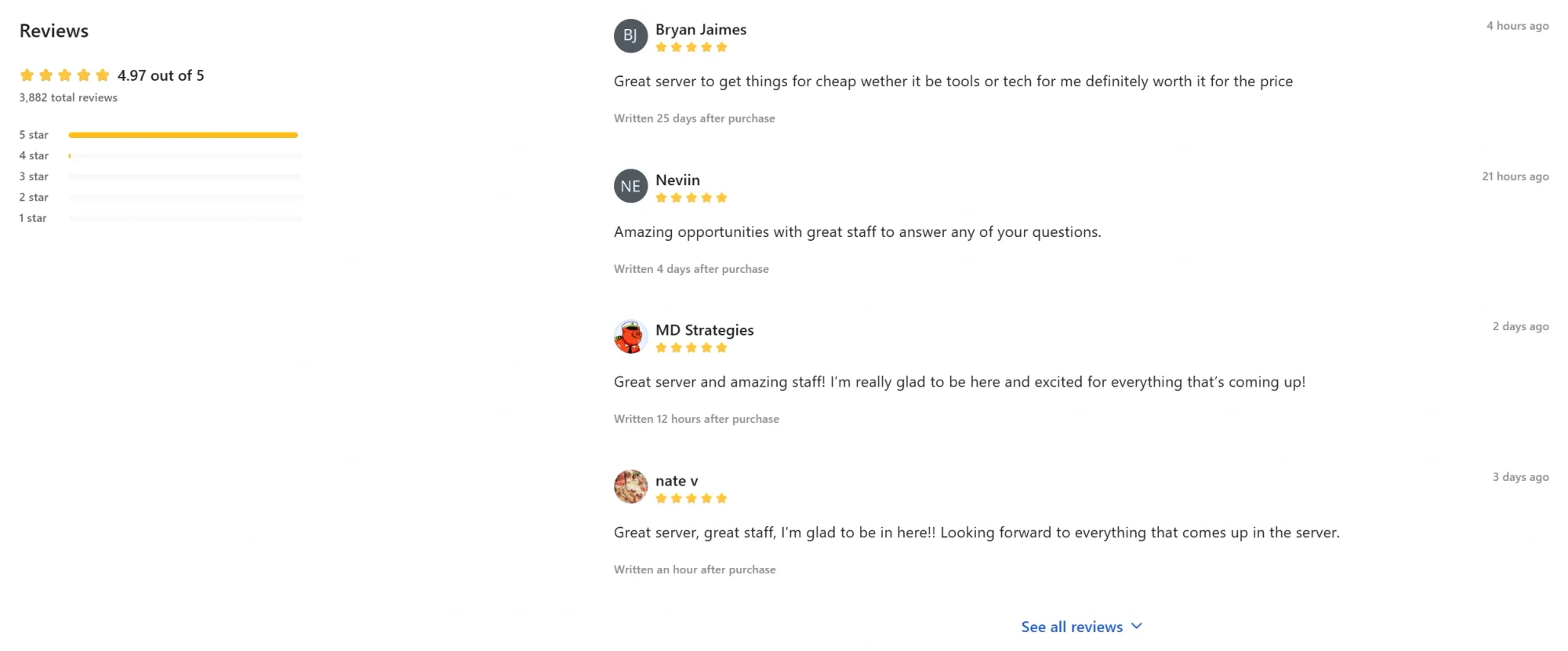
Do you know the most basic rule of storytelling: "Show, don't tell"?
It applies to marketing, too. Your course descriptions, other than going over the curriculum, should be focused on pain points, solutions, and clear outcomes.
What are they getting when they complete your course? Will they get a certificate? Will they obtain a new skill that looks great on a resume? Will they become more successful in their own business?
Once you've been around for a while, make sure to add some success stories to your profile and your product descriptions. Encourage your customers to leave reviews and testimonials to prove that you're not just an expert in your field, but also an effective teacher.
Create high-quality content
You want to share your most valuable information for free to make it undeniable that you are the expert at that thing.
If you don't have results, you have no right to be really selling an info product. You need to do the thing first before you ever teach it.
-Brett Malinowski, Head of Marketing at Whop
If your course is of professional quality, it'll be a whole lot easier to charge more for it. Since "professional" and "high-quality" are broad terms, let's break this down into specifics.
- Invest in professional production. Spend money on better equipment, such as a new camera or a new microphone, or invest in paid software to create polished slides and improve the editing process.
- Get on camera. Faceless reels do well enough on YouTube or TikTok, but as a course creator, getting on camera and letting people see and hear you goes a long way.
- Dig deeper. Cover content that goes beyond a simple Google search. Offer actionable tips for every step of the way and make sure that every slide is valuable.
- Go the extra mile. Adding ebooks and other downloadables is the first step. Next, add quizzes, assignments, and milestones to make your course feel every bit as valuable as a semester in college.
- Keep your content updated. While this isn't a must for every course, customers and search engines alike prefer content that's been recently updated. If your course remains unchanged since 2021, it's not likely to keep gathering sales.
Creating premium content means charging juicy prices. It takes more time, but it's massively worth it.
Consider including a coaching program

People love e-learning for the flexibility—learning anytime, anywhere is pretty awesome. However, it can be a lonely journey.
I experienced this firsthand. I taught myself programming with the help of a couple of online courses, and if I ever had any questions, Google was my only friend that I could turn to. If I had the option to pay more and be able to speak to an actual person, I 100% would've done it. Many of your customers are in the exact same boat.
One-on-one coaching, webinars, live events, and Q&A sessions add incredible value to your courses. They're also an excellent upselling opportunity. All you need to do is lean into the tiered pricing model and offer a couple of extra tiers where talking to you and other experts is actually an option.
You could take this a step further and create a structured mentorship program. Instead of offering coaching sessions on the things your students want to talk about, weave them into your course as a regular milestone type of meeting where you can discuss the current results and the goals that are still up ahead.
One of the most effective ways to charge more money for your course is to also set up an exclusive community for students and experts—learn how to do it here.
Selling your online course with Whop
A significant part of your course pricing strategy comes down to the platform you're selling it on. Some platforms will charge you a hefty amount just to list your course; others will take out a large cut out of each sale. This leaves you in a difficult position.
You can either pass on these platform fees to your customers or take them on yourself. This means either raising your prices or making less money. Let's be real—both of those options aren't great. If you're raising your prices, do it for yourself, not because you have to.
Whop also indirectly saves you time by making the whole process easy-breezy. All you need to do is set up your own whop, and that takes just a few minutes. Next, load up the Courses app, and voila—your course will be up for sale in no time. You can also add various downloadables, access to Discord or Telegram, the Chat app, and more.
Selling your courses on Whop means setting yourself up for success. We take care of everything from helping you upload your course to payment processing. With Whop, you can focus on what truly matters—creating content that you can be proud of.


